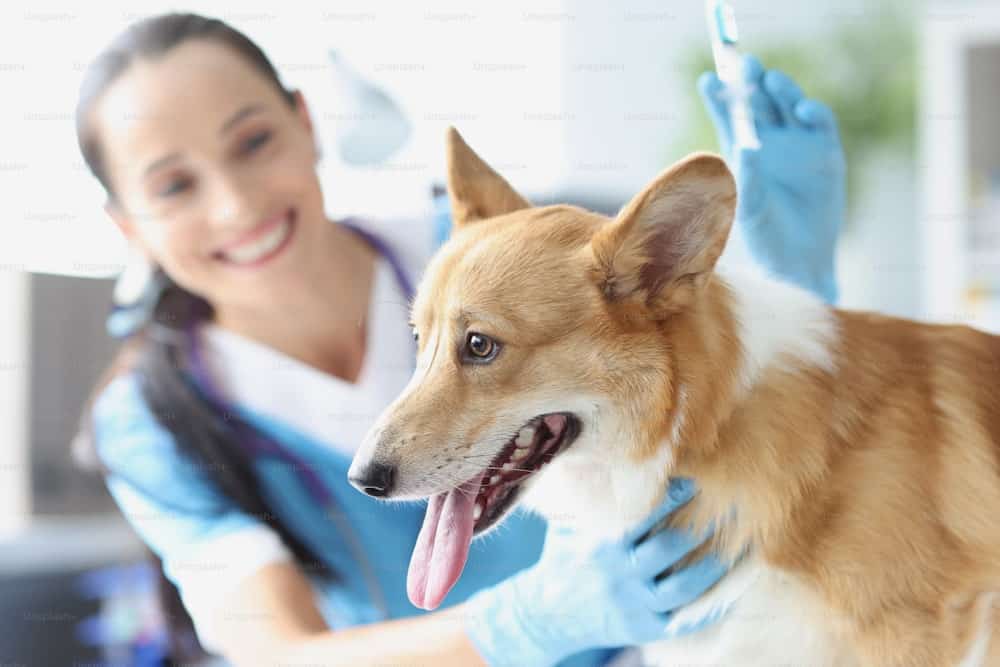Dogs are very popular pets, and it is always the duty of every pet owner to ensure that their pets are healthy and well taken care of. Similar to humans, dogs are also prone to different diseases and disorders. It is important to know most typical sicknesses in dogs and how they can be avoided to ensure your pet lives a long, healthy life. Here are 10 diseases that affect dogs and some advice on preventing them.
1.Parvovirus

Parvovirus is an inapplicable viral ailment that mainly affects the intestine of a dog and results in vomiting and diarrhea, subsequently leading to dehydration. Dogs are the most vulnerable, especially puppies and dogs that have not received their vaccinations.
Prevention:
The most effective means of avoiding parvovirus is through vaccination. Make sure you take your dog for the necessary puppy vaccinations and follow up on the necessary booster shots.
2.Distemper

Canine distemper is a potent viral illness that causes damage to the respiratory, gastrointestinal, and neural systems in the dog. Its symptoms include coughing, vomiting, diarrhea, and seizures.
Prevention:
Vaccination is key. Make sure your chosen puppy has had its initial vaccinations and is taken for regular booster shots. It is recommended that you isolate your dog from other animals that could potentially be affected by distemper, especially in areas that have reported cases.
3.HeartwormIt

is a disease brought about by parasitic worms that are spread by mosquitoes. These worms are found in the dog’s heart and lungs, causing heart failure, lung disease, and, in some cases, death.
Prevention:
There are various types of monthly heartworm preventatives, including those that are in the form of a pill, liquid applied topically, or injection. Annual health exams are also imperative for early signs of the disease to be identified by a veterinarian.
4.Lyme Disease

Lyme disease is spread by ticks and results in symptoms such as joint pains, tiredness, fever, and kidney failure. It is mostly prevalent where the ticks are more numerous.
Prevention:
Apply tick repellent such as collars, topical solutions, or chewing tablets. Another prevention step is removing ticks; check the dog frequently for them, especially if the animal was walked in a woodland area. Other vaccines are available for Lyme disease too.
5.Kennel Cough

The Kennel cough is an extremely infectious respiratory disease that is easily transmitted from dog to dog. Some of these signs are coughing, which is often dry and hacking, sneezing, and nasal discharge.
Prevention:
Get your dog vaccinated if he spends most of his time with other dogs in areas like dog parks, boarding kennels, or grooming establishments. Do not let your dog come into contact with sick animals.
6.Leptospirosis

Leptospirosis is caused through the urine of infected animals by way of pathogenic spiral bacteria. This is a disease that can be contracted by dogs by drinking water that is contaminated with this disease. They also interfere with proper liver and kidney functions.
Prevention:
There are immunizations for leptospirosis, though they are not common due to the risks that are associated with them. Avoid your dog consuming water found in containers like buckets, puddles, or ponds, but you should also avoid areas where wild animals might be found.
7.Rabies

Rabies is a fatal zoonotic viral disease that targets the nervous system. It is an infection disease that is contracted through the act of being bitten by an infected animal. If symptoms present, rabies is invariably fatal for the affected animal or human being.
Prevention:
Rabies vaccination is mandatory in the majority of regions across the world. Make sure that the dog is on his or her rabies vaccination. Avoid taking your dog near the wild animals and especially in areas that are expected to be infected with rabies-causing animals.
8.Bloat

(Gastric Dilatation-Volvulus)Hernias, on the other hand, imply that a dog’s stomach swells with gas and then torsion, leading to obstructions in circulation to the internal organs. This condition, if not treated right away, could be deadly.
Prevention:
dividing it into smaller portions, you should feed your dog more often and do not allow it to engage in active physical activities after the meal. This condition affects some breeds more than the others, for example, Great Danes and Boxers, so more attention should be paid
9.Canine

Influenza: Differentiating It From Canine Kennel CoughCanine influenza, on the other hand, is a highly infectious respiratory ailment brought about by some influenza viruses. Influenza is characterized by cough and sore throat, fever and chills, nasal congestion, fatigue, and muscle aches.
Prevention:
Canine influenza can be prevented with the help of vaccination. If your dog socializes with other dogs, particularly when they are caged, you should discuss vaccination with your vet.
10.Obesity

Obesity is not a disease per se, but Obesity is still considered a pathogenetic disorder that forms the basis for severe diseases such as diabetes, heart diseases, and some joint troubles.
Prevention:
Feed your puppy proper foods in equal portions, and make sure your dog is active enough. For those who overfeed their dog, they should observe their weights and reduce the amounts of food they give them. Seek the vet’s advice on the right diet for your dog.
Conclusion:
In essence, controlling common diseases in dogs mainly involves care, vaccines, and periodic vet examination. Preventing and identifying any diseases in your dog right at the infancy stages is very important. That way you can prevent and minimize any risks that are likely to be a threat to your dog’s health in the future.
